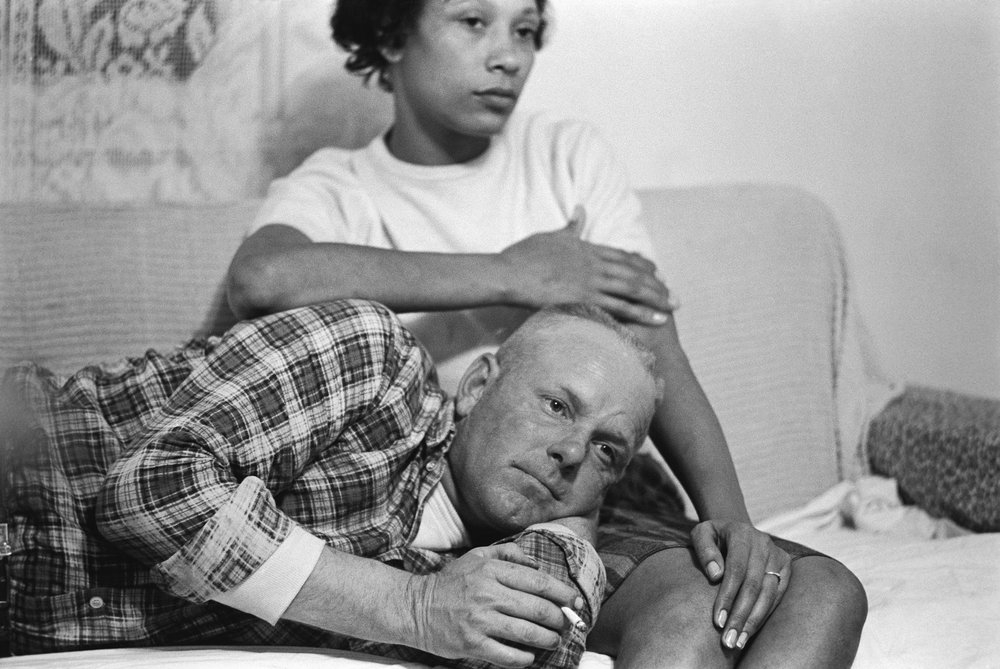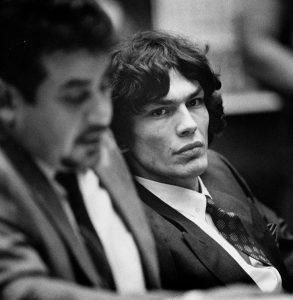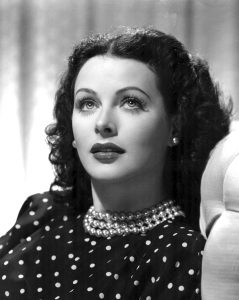“Not a day goes by that I don’t think of Richard and our love, our right to marry, and how much it meant to me to have that freedom to marry the person precious to me, even if others thought he was the ‘wrong kind of person’ for me to marry. I believe all Americans, no matter their race, no matter their sex, no matter their sexual orientation, should have that same freedom to marry. Government has no business imposing some people’s religious beliefs over others. Especially if it denies people’s civil rights. I am still not a political person, but I am proud that Richard’s and my name is on a court case that can help reinforce the love, the commitment, the fairness, and the family that so many people, black or white, young or old, gay or straight seek in life. I support the freedom to marry for all. That’s what Loving, and loving, are all about.” – Mildred Loving.1
On June 2, 1958, two childhood sweethearts, residents of Virginia, Mildred Jeter, an 18 year old, half African American and Cherokee woman, and Richard Loving, a 24 year old white man, were married in the District of Columbia, where it is legal for any man and women to marry regardless of their skin color. However, the District of Columbia was one of the few places where interracial marriages were legal. The District of Columbia along with other states believed a person could marry anyone they wanted regardless of the color of their skin. Shortly after their wedding, they returned to their home in Virginia. This was July 1958 16 and the State of Virginia did not recognize marriage between interracial couples which led to their arrest in the middle of the night in their home. “The Sheriff barged into the house, walked into their bedroom in the middle of the night, with no permission and demanded to know why they were together. Mr Loving worried of such a possibility told them his marriage license was in the drawer of the nightstand. But the sheriff arrested them anyway and charged them with violating that state’s anti-miscegenation laws prohibiting inter-racial marriages.” 2 They were arrested for violating the States Racial Integrity Act of 1924. The act made it illegal for a white person to marry anyone other than a white person, and were not able to marry unless they could prove the man and women were of pure white blood. If anyone violated this act it could result to 1 to 5 years in prison. In court, the Lovings both pleaded guilty and were sentenced to 1 year in prison. When they went to the Virginia Supreme Court Judge Leon M. Bazile found them guilty and suspended their one year sentence “On the condition that the couple leave the state and not return to Virginia together for 25 years.” 3

At that point there was nothing the Lovings could do anymore but leave. They left everything they had, including friends and family and tried to make a life for themselves in Washington DC. They would at times drives back to Virginia to see family and were extremely cautious to not be seen together. They were never together in Virginia unless they were inside the house where no one could see them. Some days Mildred would stay in Virginia and Richard would leave and on some they did the opposite. It was a tiring journey and Mildred could not take it anymore. Washington was not the ideal place where she wanted to raise her kids or live the rest of her life. She yearned for their life was back home in Virginia. During this time the Civil Rights Movement was rising and it inspired Mildred to take a huge step. In 1964, Mildred wrote to Attorney General Robert F. Kennedy hoping he could help. Kennedy then told her to contact the American Civil Liberties Union (ACLU). Bernard S. Cohen and Philip J. Hirschkop, ACLU lawyers, were more than eager to take up the case.4
Cohen and Hirschkop decided to take the case to the District Court of Virginia. It took a whole year for the suit to go through. However nothing changed. Judge Bazile’s argument was “Almighty God created the races white, black, yellow, Malay and red, and he placed them on separate continents. And but for the interference with his arrangement there would be no cause for such marriages. The fact that he separated the races shows that he did not intend for the races to mix.” 5 His prejudiced response gave them the grounds they needed to appeal to the Virginia Supreme Court of Appeals, however Judge Bazile’s decisions was upheld. It was the time every lawyer dreams of, for them to take the next big step: the Supreme Court. Finally, on April 10, 1967, the case came before the Supreme Court. This was the first time, the Supreme Court had to decide about interracial marriage bans. Neither one of the attorneys had experience in federal courts. Hirschknop was only two years out of law school and Bernard who had been out of law school for over three years, still lacked real experience in the Supreme Court. One of the biggest civil rights cases in the United States was being argued by two lawyers who lacked experience drastically lowering their chance of winning. Their argument was that Virginia’s law violates both the due process clause of the 14th amendment and the Equal Protection Clause. “The clear and central purpose of the Fourteenth Amendment is to eliminate all official state sources of invidious racial discrimination in the states.” 6 The lawyers used their evidence and knowledge to express how civil rights are part of any person’s constitutional and fundamental human right for pursuit of happiness, no matter the color their skin. The state made its argument based on “equal application theory”. They argued since both received the same punishment, they were not discriminated based upon their race, i.e. there was nothing constitutionally wrong with the court’s decision.

Neither Mildred nor Richard Loving appeared in court. However Richard sent a letter to the justices “Tell the Court I love my wife and it is just not fair that I cannot live with her in Virginia.”7 The love of the Loving was strong and the United States Supreme Court Justices granted it constitutional protection it deserve equally under the law. On June 6 1967, the Court made its decision. Their unanimous decision ruled in favor of the Loving family. Bernard S. Cohen and Philip J. Hirschkop, won the case for the Lovings and proved the State of Virginia wrong. Loving v. Virginia 1967 forced 16 US states to strike down their anti-miscegenation laws.8. Chief Justice Warren delivered the opinion of the court. He stated “There is patently no legitimate overriding purpose independent of invidious racial discrimination which justifies this classification. The fact that Virginia prohibits only interracial marriages involving white persons demonstrates that the racial classifications must stand on their own justification, as measures designed to maintain White Supremacy.” 9

Nine years after the Lovings’ arrest, Mildred and Richard could finally go home in peace. Richard built a house for his wife and 3 children in Virginia where they live together having overturned unjust laws. The battle was finally over, couples of every race could intermarry in any state they chose. The Lovings got to live and raise their children in their home state. Sadly, this beautiful family’s happiness was cut short when a drunk driver ended the life of Richard Loving on June 29, 1975. Mildred lost sight in her right eye in the same accident. She continued to lived in the house Richard built for her and their children. She never remarried. She could never love anyone as much as she loved Richard. She did not leave her house as much after his death and remained pretty quiet until recent years. She became an even bigger inspiration to many. She was interviewed and asked about her opinion on same sex marriage. She became a huge advocate for same-sex marriage. From her own experience, she knew that the government has no right to tell anyone who they can and cannot marry. Her story helped the landmark 2015 same sex marriage case that made it legal for adult to marry no matter their gender. Last year was the 50th anniversary of the Loving case, and on June 12, we celebrate the unofficial day called “Loving Day” to remember the Loving case and the end of all bans on interracial marriages. Their love is eternal and their case will be remembered as the case that showed hope and love can overcome injustice and discrimination. “Thats what Loving and loving are all about.” 10
- Stolberg, Sheryl G. “50 Years After Loving v. Virginia.” The New York Times. June 11, 2017. Accessed April 28, 2018. https://www.nytimes.com/2017/06/11/us/50-years-after-loving-v-virginia.html. ↵
- Halman, RW. “Miscegenation: Loving v. Virginia.” Spirit of a Liberal (blog). Accessed April 28, 2018. http://www.theliberalspirit.com/miscegenation-loving-v-virginia/. ↵
- Roberts, Dorothy E. “Loving v. Virginia as a Civil Rights Decision.” Review of Loving v. Virginia Supreme Court Case. 2014, 175-209. Accessed April 28, 2018, http://www.nylslawreview.com/wp-content/uploads/sites/16/2015/02/Volume-59-1.Roberts.pdf. ↵
- Holland, Brynn. “Mildred and Richard: The Love Story That Changed America.” History Stories. February 17, 2017. Accessed April 28, 2018. Mildred and Richard: The Love Story that Changed America. ↵
- Holland, Brynn. “Mildred and Richard: The Love Story That Changed America.” History Stories. February 17, 2017. Accessed April 28, 2018. Mildred and Richard: The Love Story that Changed America. ↵
- Loving v. Virginia, 395 (June 12, 1967). ↵
- Holland, Brynn. “Mildred and Richard: The Love Story That Changed America.” History Stories. February 17, 2017. Accessed April 28, 2018. Mildred and Richard: The Love Story that Changed America. ↵
- Deniz, Gevrek. “Interracial Marriage, Migration and Loving.” The Review Of Black Political Economyno. 1 (2014): 25. RePEc, EBSCOhost (accessed March 27, 2018) ↵
- Loving v. Virginia, 395 (June 12, 1967). ↵
- Stolberg, Sheryl G. “50 Years After Loving v. Virginia.” The New York Times. June 11, 2017. Accessed April 28, 2018. https://www.nytimes.com/2017/06/11/us/50-years-after-loving-v-virginia.html. ↵



115 comments
Aracely Ortiz Soriano
I liked how the Lovings didn’t give up on their love and were persistent with fighting for what was right, despite the backlash and the obstacles. I’m never gonna understand why people feel entitled to give their opinions on things that do not affect them but I’m glad that there are people like the Lovings that have the courage to fight for what is right and make positive changes in the world .
Rosario Moreno
That quote was so touching, thank you for including it. It break my heart that this was actually real. That these two people had such trouble! I honestly think that the sheriff who barged into their home was just being petty. He knew they were married by law. I thought “loving day” was such a cute thing to add. It sad that Richard had died so suddenly,but through this article he lives on.
Amariz Puerta
The Lovings Virginia case was so interesting to read and was surprising to me because I did not know what to expect. The title made me what to read it even more, because who doesn’t love a story about love. This did article did a very great job in showcasing what love is and how the Loving’s expressed it and cared for each other.
Nadia Carrasco
This is a very interesting article, I had no idea about the Lovings Virginia case. Saying that it was a great read. It is crazy the amount of hate that the Loving’s had to go through. To me it really showed how much they really loved and cared for each other on a whole different level. This article does a great job of explaining all the parts of the story and engaging the reader. There was not a part in the story that bored me.
Samire Adam
This article is amazingly written on a topic that many individuals do not know about but should. The Loving case is one of the most influential Supreme court cases on today’s America. It is always great to read on this topic because there is always more to unravel about the couple and how the Virginia government tried to play into their love. Thank you for writing on such a topic.
Irene Astran
They were a heterosexual couple but of different races. It is easier to discern why this story is so horrible in that people stood in the way of two people’s love. While many may be able to see why this account was horrible there are still so many that think that same sex relationships are wrong which is hard for me to sit with.
Arieana Martinez
This article was beautifully written. Amazing language for a truly amazing story. The Loving couple overcame all odds, and fought for not only themselves, but for everyone to be able to marry regardless of the color of their skin. Were it not for this couple’s fight, the mere thought of allowing homosexual people to marry, would probably not even be in conversation today. It takes tough fights and cases like this during time periods when it seems impossible to pave the way for even more controversial issues to be discussed today, which is exactly what the Lovings did. Great read.
Damian Jennings
As a child of two interracial heterosexual parents I can say I support this idea, and new concept at the time. For people to be segregated based on the color of their skin is mad. This specific case was not the first recorded interracial couple but it did help shine light on a controversial topic that infuriated many people of different origins, ethnicity, and backgrounds. I’m very fortunate that laws were passed in order to allow interracial couples to remain together.
Robert Freise
I have heard of the Loving V Virginia case and it is just plain right terrible that the police were trying to catch the couple having intercourse. I find it unjust and immoral if an law doesn’t allow you to marry another race. If you love somebody, you love somebody no matter the color or gender. It is crazy to think how long this couple had to wait in order for their marriage to go through in Virginia. Great article!! and nice description!!
Enrique Segovia
The case of Mildred and Richard Loving was a huge step for the civil rights movement, and for the laws in favor of allowing people to marry people of the same sex and of different races. The Lovings had a well-fought battle against the state of Virginia, and thanks to their interminable love and the strength of their faith in reaching their goal of being allowed to live in Virginia as a married couple, proved that when two people really love each other, they fight against any obstacle. The article is well-written, and I think that it is a cute love story that many people are unaware of.